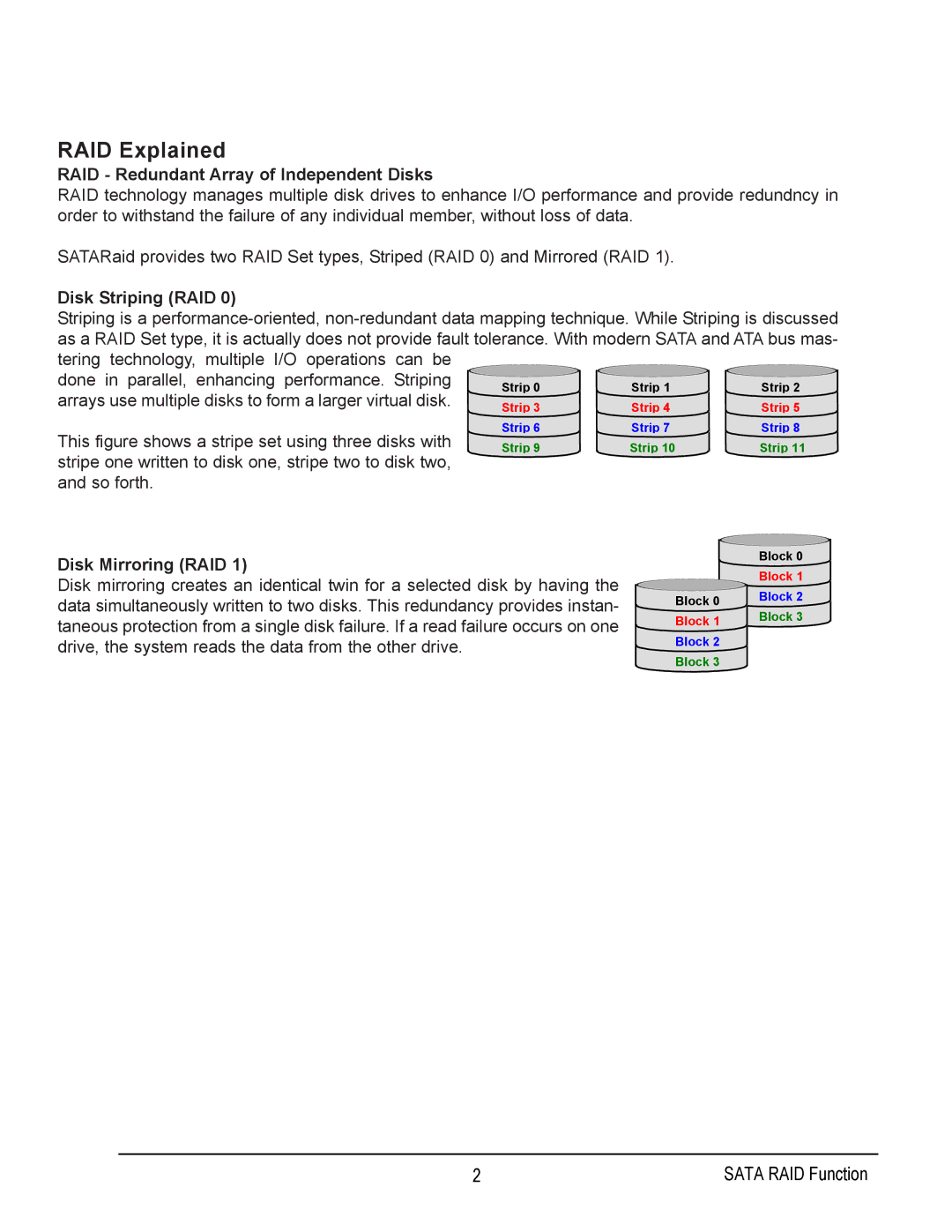
RAID Explained
RAID - Redundant Array of Independent Disks
RAID technology manages multiple disk drives to enhance I/O performance and provide redundncy in order to withstand the failure of any individual member, without loss of data.
SATARaid provides two RAID Set types, Striped (RAID 0) and Mirrored (RAID 1).
Disk Striping (RAID 0)
Striping is a
done in parallel, enhancing performance. Striping arrays use multiple disks to form a larger virtual disk.
This figure shows a stripe set using three disks with stripe one written to disk one, stripe two to disk two, and so forth.
Disk Mirroring (RAID 1)
Disk mirroring creates an identical twin for a selected disk by having the data simultaneously written to two disks. This redundancy provides instan- taneous protection from a single disk failure. If a read failure occurs on one drive, the system reads the data from the other drive.
Block 0![]()
Block 1![]()
Block 2
Block 3
2
